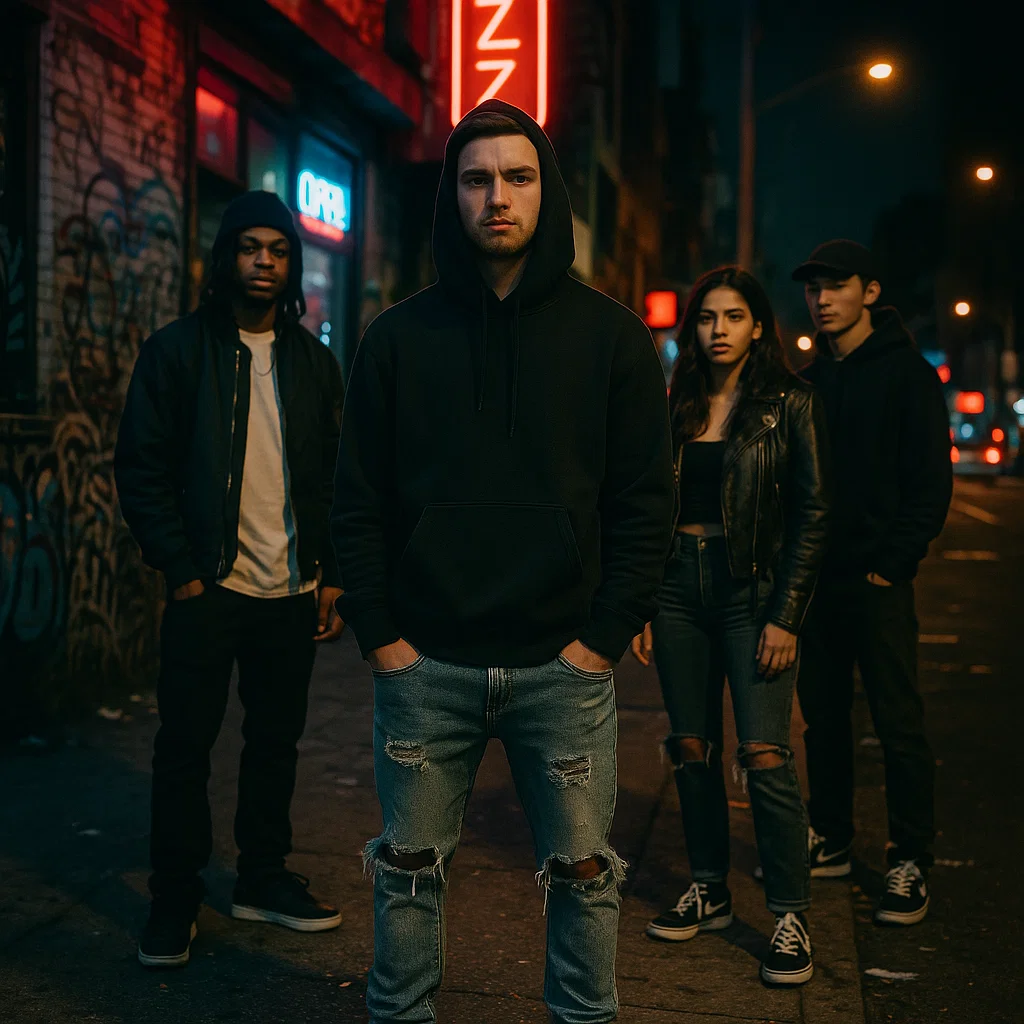The Origins of Streetwear in the USA
Streetwear isn’t just clothing—it’s culture, identity, and attitude stitched into fabric. What started as an underground movement has now exploded into the mainstream, influencing everything from luxury fashion houses to college campuses across the U.S. But how did streetwear rise from niche subculture to dominating global fashion? Let’s take a deep dive.
Streetwear is more than just oversized hoodies, graphic tees, and fresh sneakers. It’s a language spoken by youth culture, a way to rebel, and a badge of authenticity. Born in the streets of America, this fashion movement fused skateboarding, hip-hop, and surf influences into a style that now dominates global fashion runways.

The Origins of Streetwear in the USA
Streetwear’s story starts in California in the late 1970s, where surf culture thrived. Shawn Stüssy, a surfboard shaper, began printing his signature on T-shirts, unknowingly laying the blueprint for the streetwear industry.
At the same time, skateboarding culture was rising in Southern California. Baggy shorts, sneakers, and graphic tees became functional fashion for skaters—and the DNA of streetwear was born.
Hip-Hop and the Rise of Urban Fashion
By the 1980s, hip-hop was booming in New York City, and fashion became a key part of the culture. Rappers like Run DMC popularized Adidas tracksuits and shell-toe sneakers, giving streetwear its first global spotlight.
Brands like Kangol, FUBU, and Cross Colours also emerged, embracing bold logos, oversized fits, and a message of empowerment.
Sneakers: The Heart of Streetwear
No streetwear story is complete without sneakers. In 1985, Michael Jordan and Nike released the Air Jordan 1, sparking sneaker culture in America.
Sneakers became collectible items, leading to:
- Sneaker drops and overnight campouts
- Secondary resale markets
- A thriving sneakerhead community across the U.S.
Today, sneaker culture is a billion-dollar industry driving the success of streetwear.
The Role of Skateboarding Culture
Skateboarding wasn’t just a sport—it was a lifestyle. Brands like Vans, Thrasher, and Supreme became symbols of authenticity. Supreme, founded in New York in 1994, bridged the gap between skate shops and global fashion, becoming one of the most iconic streetwear brands ever.
Streetwear in the 1990s
The 90s were pivotal. Streetwear absorbed influences from graffiti art, punk, and grunge, creating a rebellious, edgy aesthetic. Baggy jeans, oversized hoodies, and bold logos defined the era.
Supreme and the Hype Model
Supreme revolutionized retail with the “drop model”—limited releases that sold out instantly. This scarcity-driven hype turned simple box logo tees into cultural artifacts worth thousands.
Streetwear Meets High Fashion
Streetwear’s shift into the luxury world was cemented when Louis Vuitton collaborated with Supreme in 2017. Suddenly, what started in the streets was sitting in high-end boutiques.
Designers like Virgil Abloh (Off-White) blurred the line between luxury and streetwear, proving the movement had gone mainstream.
Social Media and Streetwear’s Boom
Instagram and TikTok accelerated streetwear’s rise in the 2010s. Sneaker unboxings, outfit-of-the-day posts, and viral drops fueled hype culture. Platforms like StockX and GOAT made reselling easier, turning sneakers into digital gold.
Streetwear and American Youth Identity
Why do Gen Z and Millennials love streetwear? Because it’s not just fashion—it’s identity. Wearing limited-edition sneakers or hoodies signals belonging, creativity, and individuality.
Streetwear embodies the U.S. youth mantra: “Be different, but stay authentic.”
Women in Streetwear
Once male-dominated, streetwear is now being reshaped by women. Female-led U.S. brands like HLZBLZ, Married to the Mob, and Melody Ehsani are challenging stereotypes and bringing inclusivity to the scene.
The Business of Streetwear in the U.S.
Streetwear isn’t just a style—it’s a multi-billion-dollar business. The resale economy thrives on scarcity, and platforms like Grailed, StockX, and GOAT turn limited drops into big profits.
For small businesses and U.S.-based streetwear brands, eCommerce has leveled the playing field.
Streetwear Trends in the 2020s
The new era of streetwear emphasizes:
- Sustainability – Eco-friendly fabrics and ethical practices
- Independent U.S. Brands – Supporting local creatives
- Tech-driven drops – NFTs and digital collectibles
The Future of Streetwear
Streetwear will keep evolving, blending real-world fashion with digital experiences. From metaverse wearables to AR fashion shows, the culture will continue shaping how the next generation dresses and expresses identity.
FAQs
1. What is the origin of streetwear?Streetwear started in California’s surf and skate culture in the 1970s.
2. How did sneakers become part of streetwear?
The release of Air Jordans in 1985 sparked sneaker culture and tied sneakers to streetwear.
3. Which U.S. brands are considered streetwear pioneers?
Stüssy, Supreme, FUBU, and Cross Colours are key pioneers.
4. Why is streetwear so popular in the USA?
It represents identity, authenticity, and exclusivity for American youth.
5. What’s the future of streetwear?
Streetwear is moving into sustainability, digital fashion, and metaverse wearables.
Conclusion
From the skate parks of California to luxury runways in Paris, streetwear’s journey reflects resilience, rebellion, and reinvention. What began as subculture has become one of the most powerful forces in American fashion—and it’s here to stay.